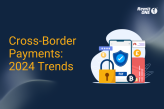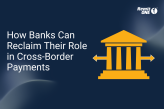Driving Innovation and Customer Trust: The Role of Compliance, Speed, and Transparency in the Evolving Payments Landscape | IPR Global 2024 November 14, 2024

In today’s fast-evolving payments landscape, security, compliance, and customer expectations are more interconnected than ever. As businesses strive to innovate and meet the growing demand for faster, more transparent payment solutions, integrating compliance from the start is no longer a choice—it’s a necessity.
We gathered our panel of experts from top companies in the field to share their insights and strategies.
Panellists:
- Michael Bermingham, Co-Founder & Chief Business Officer, Nium
- Anastasia Serikova, VP, Head of Revenue and Growth, Visa Direct at Visa
- Kunal Choudhary, Money Transfers Strategy Lead, Worldpay
- Mitchell Fordham, Chief Revenue Officer & Co-founder, eSIM Go
Moderator:
- Oussama Kseibati, Business Development Officer, RemitONE
1. Balancing Innovation with Security: How Are Companies Integrating Compliance to Enhance Trust in the Payments Landscape?
In the evolving payments landscape, security and compliance aren’t just obstacles—they’re integral to innovation and customer trust. Michael highlighted that integrating compliance directly into product development can actually streamline processes rather than create friction. By building end-to-end solutions that embed compliance from the start, companies can meet regulatory standards, mitigate fraud risks, and open doors for more secure, seamless transactions. This approach not only can potentially position companies as leaders in compliance but also offers clients and partners a smoother, more reliable service.
Anastasia echoed Michael’s view, emphasising that products must work in close harmony with compliance. Open, continuous dialogue with regulators is crucial to ensuring that innovation and security progress together. Recent cross-border payment targets set by the Financial Stability Board—such as the goal for 75% of cross-border payments to arrive within an hour, with the remainder arriving within one business day by 2027. While challenging, it can push the industry to ultimately improve transparency and customer satisfaction.
2. Shifting Customer Expectations and the Impact of Seamless Payments and Remittances on Satisfaction
Customer expectations should naturally evolve as innovation progresses, highlighted Kunal. If they aren’t changing, something’s off. He broke this down into three key areas: transparency, speed, and convenience. Worldpay’s recent report found 84% of consumers want one-click payments, 67% prioritise ease of use when choosing a preferred payment method, and an impressive 97% say that fast payouts are crucial for a positive remittance experience. Integrating these elements into your payment processes is essential for a seamless customer journey.
When it comes to customer loyalty, fees are a major factor—73% of respondents consider them when choosing a remittance provider. Even more telling, 98% said transparency from the beginning of the transaction is key to keeping them loyal. In contrast, hidden fees or a lack of transparency can break trust, leading 20% of customers to abandon a transaction and seek alternatives. Failure to meet expectations on transparency or fees could leave customers feeling blindsided, eroding their confidence in the brand.
Michael added to Kunal’s point, highlighting the growing demand for real-time payments. Today’s customers want to know exactly where their money is at every step of the journey. While speed is crucial, transparency about the transaction’s status throughout the process is just as important. Customers are increasingly frustrated when they don’t have visibility into the status of their payments, which can detract from their overall satisfaction.
3. Case Studies: Leading Companies Elevating Customer Experience
Mitchell shared how Western Union is utilising eSIM technology to enhance customer convenience and loyalty. Through their digital wallet, the company offers eSIM options that allow customers to stay connected while travelling abroad, making it easier to manage finances, communicate with family, and access their services. This added benefit not only enriches the customer experience but also helps retain users by offering more value. Additionally, this approach allows Western Union to gather data that can be used to further refine and improve their services.
Worldpay, one of the largest payment acquirers, has a robust global infrastructure supporting over 180 markets and processing more than 50 billion transactions in multiple currencies. This vast expertise enables them to help merchants expand into new markets and enhance the customer experience, pointed out Kunal. Worldpay’s ability to innovate in fraud prevention through AI and machine learning helps ensure flag fraudulent activity beforehand and prevent it moving forward. While their focus on offering a wide range of payment options helps meet diverse customer needs. Their continued commitment to enhancing the payments experience through these technologies has enabled merchants to expand into new markets with greater confidence, benefiting both businesses and customers alike.
A growing trend in the payments industry, highlighted by Anastasia, is the increasing demand for faster, more transparent payments, particularly for Small to Medium Enterprises (SMEs). A notable example is Revolut’s instant payouts for businesses, a service powered by Visa Direct. This has been driven by the need for speed and clarity in payments.
4. Promoting Financial Inclusion Through Payments and Remittances in Underserved Regions
In regions like Latin America, particularly Brazil, the introduction of real-time payments through PIX has been a game-changer. This system allows users to send and receive payments instantly, bypassing traditional banking systems and making financial transactions more accessible. Additionally, the ability to store and use foreign currencies in digital wallets is helping underserved populations meet daily financial needs, especially in times of crisis. This has opened up new opportunities for individuals, such as remote workers and freelancers, who can now receive payments from employers across different regions without relying on traditional bank accounts.
Anastasia highlighted several initiatives powered by Visa that contribute to financial inclusion. She shared how Visa has facilitated rapid state payouts during crises, such as in Guatemala following a natural disaster. Through Visa’s payment rails, the government was able to distribute funds quickly to almost 3 million people. Looking ahead, Anastasia predicts that digital wallets are expected to play an even larger role in financial inclusion, making it easier for people in underserved regions to access financial services.
Mitchell also discussed the significant role of mobile operators in providing financial services to underserved regions, particularly through companies like MTN and Digicel. However, a more innovative approach where not only can money be transferred between phone numbers, but the mobile operator also provides a SIM card to the recipient. This creates opportunities to better understand user behaviour, track interests, and gather insights about customer segments. By offering mobile plans at affordable rates, these operators are able to deliver a range of services that offer more value than just low fees, which in turn helps foster stronger brand loyalty and financial inclusion.
What next?
At RemitONE, our commitment is to provide you with cutting-edge technology, compliance solutions, an expansive network, and expert guidance to navigate the ever-evolving landscape of remittances. Whether you’re just starting out or looking to scale your business, we’ve got you covered.
Want to see how RemitONE can elevate your business? Book a free consultation to discover how we can supercharge your business
Related Posts
-

How to Build a Leaner, Smarter Money Service Business in 2025
In an era of rapid regulatory change, rising customer expectations, and digital disruption, how can money service businesses (MSBs)—companies that…
May 22, 2025 -

Trump’s Threats to Cross-Border Payments: What It Means for Your Business
It’s been a short while since Trump stormed back into office, and he’s already shaken things up with his hard-hitting…
May 22, 2025 -

Unlock Faster, More Secure Payments with RemitONE’s Open Banking Solution
We’re excited to introduce the latest enhancement to our RemitONE Money Transfer Platform: the RemitONE Open Banking Solution. Competitively priced…
January 31, 2025 -

How to Expand Your SEND Operations in the UK and Europe—Without the Regulatory Hassle
The remittance market in Europe is valued at €133.7 billion annually, with the UK market contributing an additional £23 billion.
January 31, 2025 -

The Top 5 Cross-Border Payment Trends That Shaped 2024
What a year it’s been for the world of payments! From breakthroughs in tech to surprising shifts in consumer behaviour,…
December 19, 2024 -

How Banks Can Reclaim Their Role in Cross-Border Payments with RemitONE
Banks, once the cornerstone of international payments, are finding themselves sidelined. Senders and receivers have now joined forces, pushing banks…
December 18, 2024